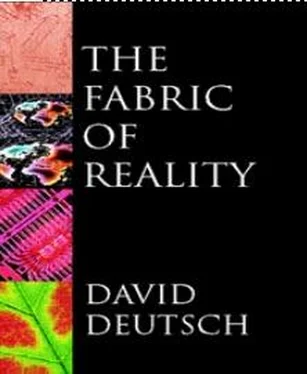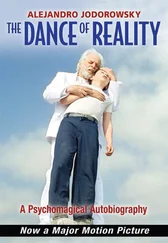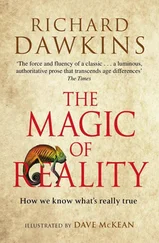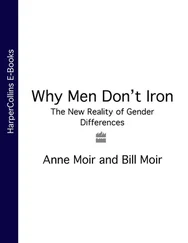David Deutch - The Fabric of Reality
Здесь есть возможность читать онлайн «David Deutch - The Fabric of Reality» весь текст электронной книги совершенно бесплатно (целиком полную версию без сокращений). В некоторых случаях можно слушать аудио, скачать через торрент в формате fb2 и присутствует краткое содержание. ISBN: , Жанр: Физика, Философия, на английском языке. Описание произведения, (предисловие) а так же отзывы посетителей доступны на портале библиотеки ЛибКат.
- Название:The Fabric of Reality
- Автор:
- Жанр:
- Год:неизвестен
- ISBN:0-7139-9061-9
- Рейтинг книги:4 / 5. Голосов: 2
-
Избранное:Добавить в избранное
- Отзывы:
-
Ваша оценка:
- 80
- 1
- 2
- 3
- 4
- 5
The Fabric of Reality: краткое содержание, описание и аннотация
Предлагаем к чтению аннотацию, описание, краткое содержание или предисловие (зависит от того, что написал сам автор книги «The Fabric of Reality»). Если вы не нашли необходимую информацию о книге — напишите в комментариях, мы постараемся отыскать её.
The Fabric of Reality — читать онлайн бесплатно полную книгу (весь текст) целиком
Ниже представлен текст книги, разбитый по страницам. Система сохранения места последней прочитанной страницы, позволяет с удобством читать онлайн бесплатно книгу «The Fabric of Reality», без необходимости каждый раз заново искать на чём Вы остановились. Поставьте закладку, и сможете в любой момент перейти на страницу, на которой закончили чтение.
Интервал:
Закладка:
I said in Chapter 8that two conditions must hold for an entity to be a cause of its own replication: first, that the entity is in fact replicated; and second, that most variants of it, in the same situation, would not be replicated. This definition embodies the idea that a cause is something that makes a difference to its effects, and it also works for causation in general. For X to be a cause of Y, two conditions must hold: first, that X and Y both happen; and second, that Y would not have happened if X had been otherwise. For example, sunlight was a cause of life on Earth because both sunlight and life actually occurred on Earth, and because life would not have evolved in the absence of sunlight.
Thus, reasoning about causes and effects is inevitably also about variants of the causes and effects. One is always saying what would have happened if, other things being equal, such and such an event had been different. A historian might make the judgement that ‘ if Faraday had died in 1830, then technology would have been delayed for twenty years’. The meaning of this judgement seems perfectly clear and, since in fact Faraday did not die in 1830 but discovered electromagnetic induction in 1831, it seems quite plausible too. It is equivalent to saying that the technological progress which did happen was in part caused by Faraday’s discovery, and therefore also by his survival. But what does it mean, in the context of spacetime physics, to reason about the future of non-existent events? If there is no such event in spacetime as Faraday’s death in 1830, then there is also no such thing as its aftermath. Certainly we can imagine a spacetime that contains such an event; but then, since we are only imagining it, we can also imagine that it contains any aftermath we like. We can imagine, for example, that Faraday’s death was followed by an acceleration of technological progress. We might try to get around this ambiguity by imagining only spacetimes in which, though the event in question is different from that in actual spacetime, the laws of physics are the same. It is not clear what justifies restricting our imagination in this way, but in any case, if the laws of physics are the same then the event in question could not have been different, because the laws determine it unambiguously from the previous history. So the previous history would have to be imagined as being different as well. How different? The effect of our imagined variation in history depends critically on what we take ‘other things being equal’ to mean. And that is irreducibly ambiguous, for there are infinitely many ways of imagining a state of affairs prior to 1830 which would have led to Faraday’s death in that year. Some of those would undoubtedly have led to faster technological progress, and some to slower. Which of them are we referring to in the ‘ if … then …’ statement? Which counts as ‘other things being equal’? Try as we may, we shall not succeed in resolving this ambiguity within spacetime physics. There is no avoiding the fact that in spacetime exactly one thing happens in reality, and everything else is fantasy.
We are forced to conclude that, in spacetime physics, conditional statements whose premise is false (‘if Faraday had died in 1830 …’) have no meaning. Logicians call such statements counter-factual conditionals, and their status is a traditional paradox. We all know what such statements mean, yet as soon as we try to state their meaning clearly it seems to evaporate. The source of this paradox is not in logic or linguistics, it is in physics — in the false physics of spacetime. Physical reality is not a spacetime. It is a much bigger and more diverse entity, the multiverse. To a first approximation the multiverse is like a very large number of co-existing and slightly interacting spacetimes. If spacetime is like a stack of snapshots, each snapshot being the whole of space at one moment, then the multiverse is like a vast collection of such stacks. Even this (as we shall see) slightly inaccurate picture of the multiverse can already accommodate causes and effects. For in the multiverse there are almost certainly some universes in which Faraday died in 1830, and it is a matter of fact (not observable fact, but objective fact none the less) whether technological progress in those universes was or was not delayed relative to our own. There is nothing arbitrary about which variants of our universe the counter-factual ‘if Faraday had died in 1830…’ refers to: it refers to the variants which really occur somewhere in the multiverse. That is what resolves the ambiguity. Appealing to imaginary universes does not work, because we can imagine any universes we like, in any proportions we like. But in the multiverse, universes are present in definite proportions, so it is meaningful to say that certain types of event are ‘very rare’ or ‘very common’ in the multiverse, and that some events follow others ‘in most cases’. Most logically possible universes are not present at all — for example, there are no universes in which the charge on an electron is different from that in our universe, or in which the laws of quantum physics do not hold. The laws of physics that are implicitly referred to in the counter-factual are the laws that are actually obeyed in other universes, namely the laws of quantum theory. Therefore the ‘if… then’ statement can unambiguously be taken to mean ‘in most universes in which Faraday died in 1830, technological progress was delayed relative to our own’. In general we may say that an event X causes an event Y in our universe if both X and Y occur in our universe, but in most variants of our universe in which X does not happen, Y does not happen either.
If the multiverse were literally a collection of spacetimes, the quantum concept of time would be the same as the classical one. As Figure 11.6 shows, time would still be a sequence of moments. The only difference would be that at a particular moment in the multiverse, many universes would exist instead of one. Physical reality at a particular moment would be, in effect, a ‘super-snapshot’ consisting of snapshots of many different versions of the whole of space. The whole of reality for the whole of time would be the stack of all the super-snapshots, just as classically it was a stack of snapshots of space. Because of quantum interference, each snapshot would no longer be determined entirely by previous snapshots of the same spacetime (though it would approximately, because classical physics is often a good approximation to quantum physics). But the super-snapshots beginning with a particular moment would be entirely and exactly determined by the previous super-snapshots. This complete determinism would not give rise to complete predictability, even in principle, because making a prediction would require a knowledge of what had happened in all the universes, and each copy of us can directly perceive only one universe. Nevertheless, as far as the concept of time is concerned, the picture would be just like a spacetime with a sequence of moments related by deterministic laws, only with more happening at each moment, but most of it hidden from any one copy of any observer.
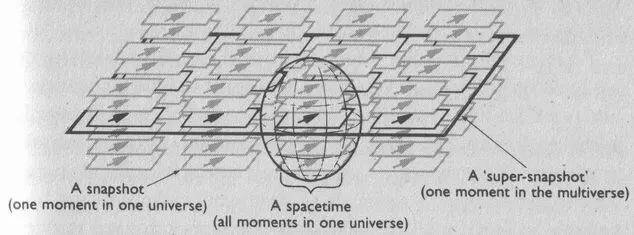
FIGURE 11.6 If the multiverse were a collection of interacting spacetimes, time would still be a sequence of moments.
However, that is not quite how the multiverse is. A workable quantum theory of time — which would also be the quantum theory of gravity — has been a tantalizing and unattained goal of theoretical physics for some decades now. But we know enough about it to know that, though the laws of quantum physics are perfectly deterministic at the multiverse level, they do not partition the multiverse in the manner of Figure 11.6, into separate spacetimes, or into super-snapshots each of which entirely determines the others. So we know that the classical concept of time as a sequence of moments cannot be true, though it does provide a good approximation in many circumstances — that is, in many regions of the multiverse.
Читать дальшеИнтервал:
Закладка:
Похожие книги на «The Fabric of Reality»
Представляем Вашему вниманию похожие книги на «The Fabric of Reality» списком для выбора. Мы отобрали схожую по названию и смыслу литературу в надежде предоставить читателям больше вариантов отыскать новые, интересные, ещё непрочитанные произведения.
Обсуждение, отзывы о книге «The Fabric of Reality» и просто собственные мнения читателей. Оставьте ваши комментарии, напишите, что Вы думаете о произведении, его смысле или главных героях. Укажите что конкретно понравилось, а что нет, и почему Вы так считаете.
